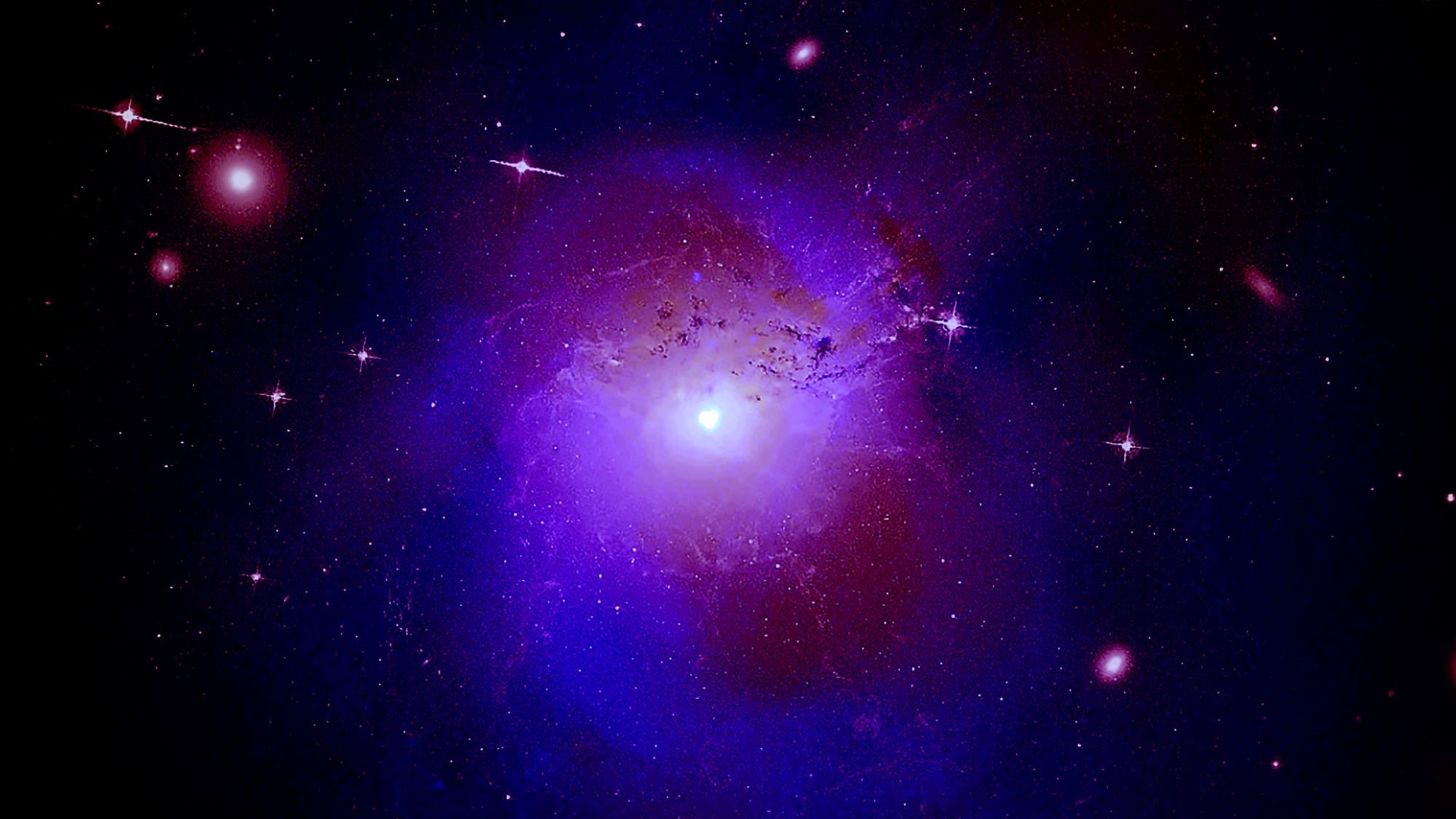

The idea of gravity as we know it has been around for a long time. More than 300 years ago, Isaac Newton first shared his theory of gravitation, describing how massive objects are attracted to each other. Then, around a hundred years ago, Albert Einstein refined and expanded upon Newton’s ideas to create the theory of relativity—explaining gravity as the way objects, especially at the extremes across the universe, warp the fabric of space around them.
But there are still a few mysteries in the cosmos that even the well-tested ideas of relativity can’t explain. The biggest one? Dark matter, the most notorious problem in astronomy today. Many scientists think dark matter is some kind of yet-unknown particle that obeys traditional laws of gravity. Others think the issue is actually gravity itself. In that view, perhaps we need a modified theory of gravity—also known as MOND, for MOdified Newtonian Dynamics—where, at the largest and smallest scales, gravity acts differently from the usual Newton or Einstein theories.
MOND is often met with significant skepticism, because Newton and Einstein’s ideas of gravity have had so much success. But new observations recently published in The Astrophysical Journal claim to provide evidence for modified gravity by taking a detailed look at the ways binary stars move around each other.
“The new results provide direct evidence that Newton’s theory simply breaks down” at certain scales, explains Kyu-Hyun Chae, astronomer at Sejong University in Seoul, South Korea and author of the new paper claiming evidence for MOND. Chae used data from the European Gaia satellite, which has been measuring the positions and motions of stars with unprecedented precision over the past decade. In particular, he looked at binary stars with particularly wide, far-apart orbits to measure their accelerations, for which MOND and traditional theories predict different values.
[Related: Have we been measuring gravity wrong this whole time?]
These spaced-out stars move pretty slowly, enabling tests of gravity where there are tiny accelerations. These small accelerations are where the two theories of gravity diverge, and modified gravity predicts the stars will move 30 to 40 percent faster than they would under “normal” gravity—precisely what Chae claims to have seen in the data. At the small scales of binary stars, too, according to Chae, dark matter can’t really have an effect, so it can’t explain the observed differences from the predictions of traditional gravity.
Xavier Hernandez, an astronomer at the National Autonomous University of Mexico who first proposed the idea of testing gravity with wide binary systems but wasn’t involved in the new work, has confidence in these new results, especially since they complement his past work. “Two largely independent and complementary approaches have been shown to yield the same result,” he says, emphasizing that this a clear example of the scientific process.
The best explanation for Chae’s observations is a particular flavor of modified gravity theories, called AQUAL MOND. But just because gravity might not be a perfect match to one theory, doesn’t mean we need to throw out everything we have. “There are many versions of modified gravity because it can be anything that goes beyond Einstein’s theory of general relativity,” said physicist Sergei Ketov in a news release from the University of Tokyo Kavli Institute. “Modified gravity does not rule out Einstein’s theory, but it shows its boundaries.”
[Related: Gravity could be bringing you down with IBS]
Not all in the scientific community are convinced this is actually a “smoking-gun” for MOND, though. “The quick answer is that this result is a confluence of three things: good science, bad science, and the ugly state of science news,” wrote science communicator Ethan Siegel on Friday in his column Starts with a Bang. Siegel and other scientists have expressed concerns about the reliability of the observations used in Chae’s study—with some even publishing contradictory research—and discontent with news articles creating the impression that this work is a decisive victory for modified gravity. Depending on what stars scientists include in their analysis, the results vary, and these scientists currently disagree on what assumptions are the correct ones to make.
“If anyone is truly skeptical, he/she should try to disprove my results,” counters Chae. However, he empathizes with the motivation for some of the disbelief. The analyses at odds with this research, he adds, failed to include an important self-calibration step. Current modified gravity theories are “like the Bohr model of atoms without quantum physics developed yet. But, we need to remember that quantum physics was eventually developed,” he adds. (The Bohr model is the classic elementary-school science view of an atom, with electrons orbiting a nucleus, which was later replaced by the much fuzzier and probabilistic view of quantum mechanics.)
Only time and many other tests will be able to determine which theory will come out on top, and if dark matter is a particle or just a tweak to gravity. “We have these binary stars orbiting each other in front of us, and not doing what Newton said they should be doing,” says Hernandez. “Not considering modified gravity is no longer an option.”
This post has been updated with additional comments from Chae.
